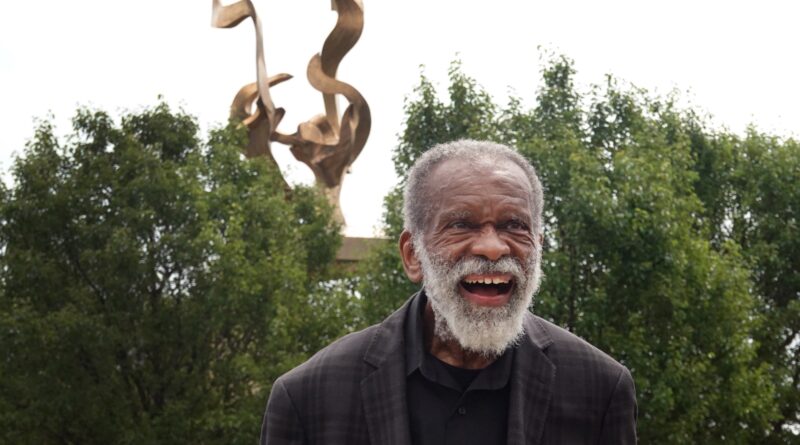Celebrated Chicago Artist Richard Hunt Dies
by Lauren Nutall
December 19, 2023
Renowned artist and sculptor Richard Hunt of “Swing Low” fame died in his Chicago home on December 16. He was 88.
Renowned Chicago artist Richard Hunt died peacefully in his home on December 16, according to an obituary posted on his website. He was 88.
One of the most prolific artists of his time, Hunt’s produced some of the country’s most moving sculptures and monuments.
Born September 12, 1935 in Chicago, Hunt became an avid member of the city’s art scene at a young age, joining the South Side Community Art Center (SSCAC) and the Junior School of the Art Institute of Chicago. He later attended the School of the Art Institute of Chicago (SAIC) on a scholarship, where he taught himself how to weld, crafting found metal objects into works of art. Two years later, his work was showcased in the Museum of Modern Art (MoMA), launching his expansive career.
The first time Hunt witnessed Emmett Till in his open casket proved a pivotal moment. “What happened to [Till] could have happened to me,” Hunt said. Compelled by the young boy’s untimely death, Hunt’s artwork heavily inspired by his own civil rights activism. He created sculptures of several historical figures, including Till, Dr. Martin Luther King, Jr., Mary McLeod Bethune, and Ida B. Wells.
In 1968, President Lyndon B. Johnson named Hunt to serve on the National Council of the Arts. Hunt was the first African American visual artist to serve on the council.
Over the course of his nearly 70-year career, Hunt served on several boards and committees, including working as a Commissioner for the National Museum of American Art as part of the Smithsonian Institution. He received dozens of awards as well, such as John Simon Guggenheim Memorial Fellowship and the Lifetime Achievement Award from the International Sculpture Center.
His 30-foot bronze statue, Swing Low, currently hangs inside the National Museum of African American History and Culture in honor of the African American Spiritual.
Hunt’s work defined the 20th century, and he considered artistic freedom the most significant aspect of his career. “I am interested more than anything else in being a free person,” he said. “To me, that means that I can make what I want to make, regardless of what anyone else thinks I should make.”
Hunt will be laid to rest in a private ceremony in Chicago. In 2024, there will be a public celebration of his life and artwork, according to NBC News.
RELATED CONTENT: Spelman College Welcomes New Art Installation Honoring Late Playwright Lorraine Hansberry

